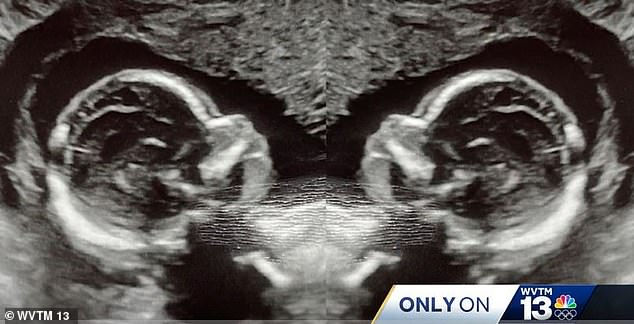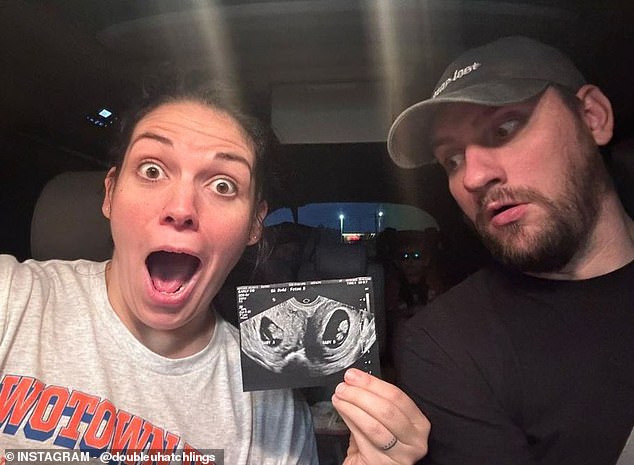Alabama woman born with 2 uteruses is now pregnant in both of them – in a one-in-a-million medical phenomenon
An Alabama woman who was born with two uteruses is now pregnant in both uteruses — a one-in-a-million medical condition.
Kelsey Hatcher, 32, was born with a condition called uterine didelphys, also known as double uterus. This allowed her to develop two uteruses and two cervixes – the canal that connects the uterus to the vagina – which experts say only occurs in three in a thousand women.
This spring, the mother of three learned she was pregnant with twins. She told her husband Caleb, “I said, ‘Well, there’s two in there.’ And he said, ‘You’re lying.’
However, she was shocked to learn during the first ultrasound that she was carrying one baby in each womb.
Kelsey Hatcher, 32, was born with two uteruses and two cervixes. She is now expecting twins: one in each womb

The twins are both girls and are developing normally. Because they are in two different wombs, they can be born hours, days or even weeks apart
Dr. Richard Davis, an expert on high-risk pregnancies at the University of Alabama-Birmingham Hospital, told the local news channel WVTM double uterus is itself rare, and having twins in each uterus is about a one in a million chance.
“The odds of twins being born in each of them are absolutely insane,” he said.
Mrs Hatcher is approximately 34 weeks pregnant and her due date is Christmas Day for both babies.
When the uterus forms in a fetus during pregnancy, it begins as two ducts that join to form the organ. However, in people with a double uterus, the ducts do not come together. Each duct instead creates its own uterus. In Ms. Hatcher’s case, she also has two cervixes.
It is unclear why this happens.

Mrs Hatcher and her husband Caleb (pictured here) will have five children under the age of eight once the twins are born. They said this would be their last pregnancy
Most women do not know they have the condition until it is discovered during a routine pelvic exam or while investigating effects such as recurrent miscarriages or severe menstrual pain.
According to the Cleveland Clinic, people with a double uterus are at increased risk for miscarriage, preterm labor, cesarean sections, low birth weight, growth retardation and babies born in the breech position — when the baby sits on its feet or bottom first. the uterus, which can be dangerous and complicate childbirth.
Both babies are developing normally, although the challenge will be welcoming them into the world.
Dr. Davis said, “So when (Ms. Hatcher) goes into labor, we’re going to have to monitor each uterus and see which one is contracting and whether they’re doing about the same thing or whether they’re different.”
The uteruses can experience contractions at different times and the sisters can be born hours, days or even weeks apart.
Dr. Shweta Patel, another doctor caring for Ms Hatcher, said Good morning America: ‘It’s so unpredictable, and so we’ve had a lot of conversations with (Ms. Hatcher) about the different scenarios that could happen, where she could have a vaginal birth with both babies, she could have a vaginal birth with one and a caesarean section with the other, or perhaps you will also have a caesarean section for both.
‘There is no real expert who knows how to deal with a patient with two uteruses and two babies, with one in each uterus.
“So we’re really relying on our basic education and our basic knowledge and the normal physiology of pregnancy that we understand, and applying that to her scenario.”
By the time the twins are born, Mrs. Hatcher and her husband will have five children under the age of eight.
She said, “The third was our last… We are certainly grateful for the blessings, but this will certainly be the end.”
